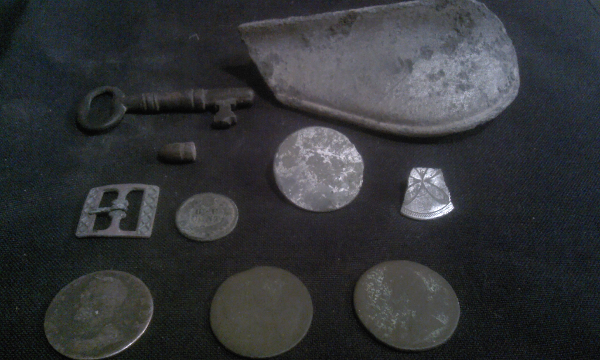I've been given a metal detector (White's Goldmaster II, 9" 'Longscan' DD (I think, it's oval)) by a friend a couple years ago and have been getting into it over the past year or so. I have searched my 2 acre yard about 10 times over. Seems every time I search I wind up finding something I previously missed. So far I have found a key, an indian head wheat penny, a radiator cap/ornament, two silver-looking buttons (not sure what kind of metal they are), and three King George II half-pennies. Also some trinkets like a watch band buckle, about 10 bullets, and tons of foil and nails.
My questions are....
Is there a better coil for searching cut-grass fields (for the Goldmaster II)?
Do my sweeps have to overlap, or is it okay to move forward one full coil length each pass?
Sometimes when I'm in discrimination mode, it says 'Ferrous' in one direction, and 'Non-Ferrous' in the other. Is that normal?
How much easier is it searching with a newer detector? Should I upgrade?
Is there a 'n00b' forum that I should be posting these questions in?
Sorry if I posted this wrong, or if I've asked too many q's...


After re-reading before posting, I realize now that I should've posted most of my questions in the Analog forum... I think...
My questions are....
Is there a better coil for searching cut-grass fields (for the Goldmaster II)?
Do my sweeps have to overlap, or is it okay to move forward one full coil length each pass?
Sometimes when I'm in discrimination mode, it says 'Ferrous' in one direction, and 'Non-Ferrous' in the other. Is that normal?
How much easier is it searching with a newer detector? Should I upgrade?
Is there a 'n00b' forum that I should be posting these questions in?
Sorry if I posted this wrong, or if I've asked too many q's...


After re-reading before posting, I realize now that I should've posted most of my questions in the Analog forum... I think...




